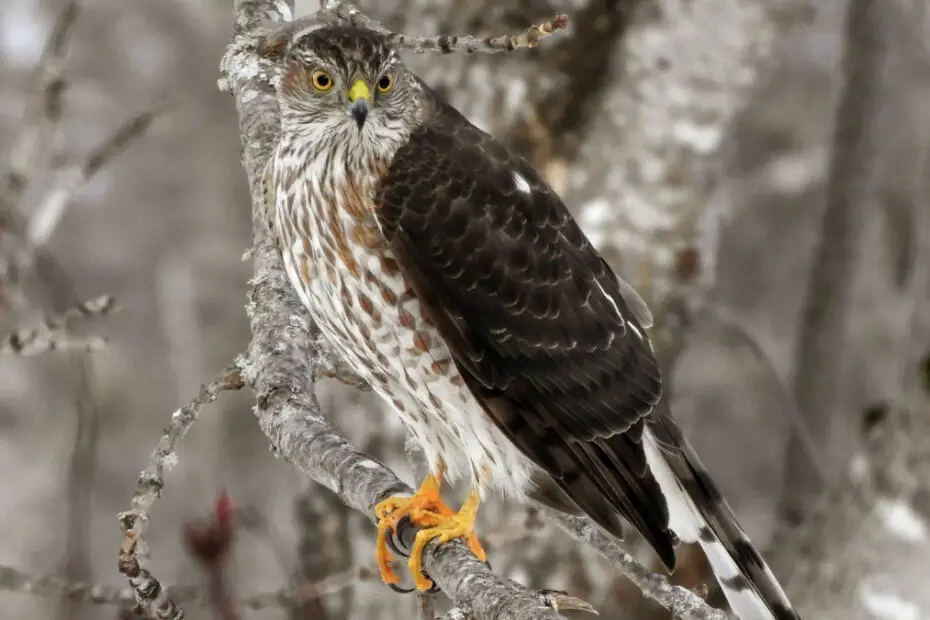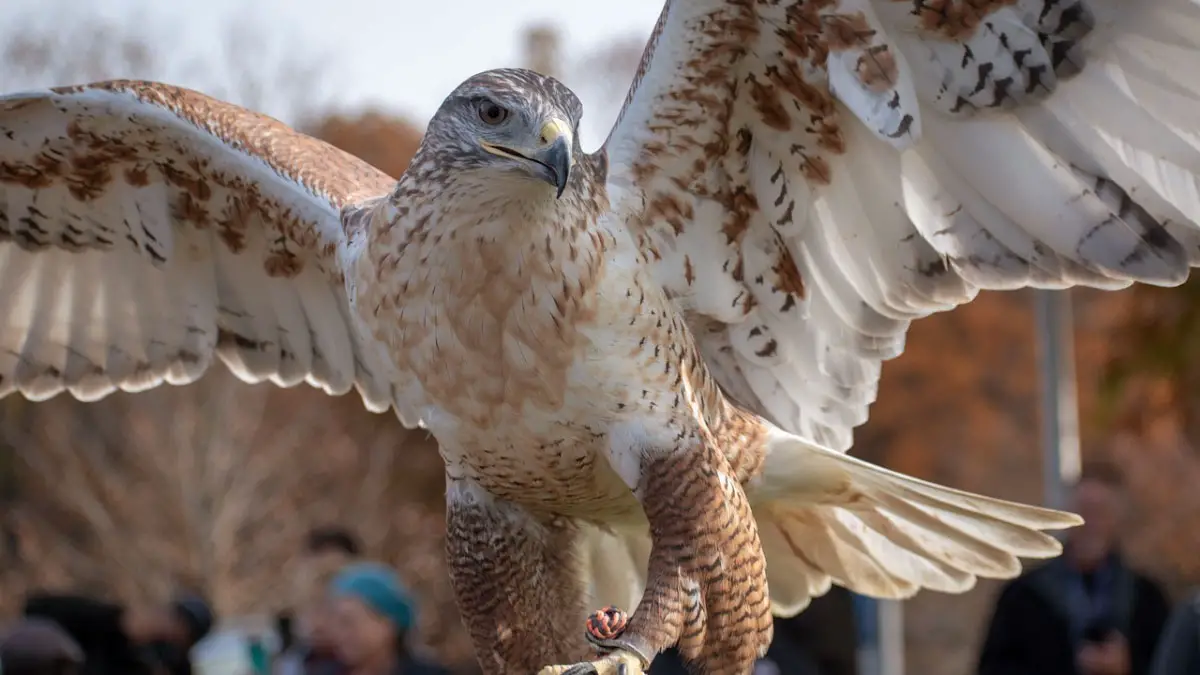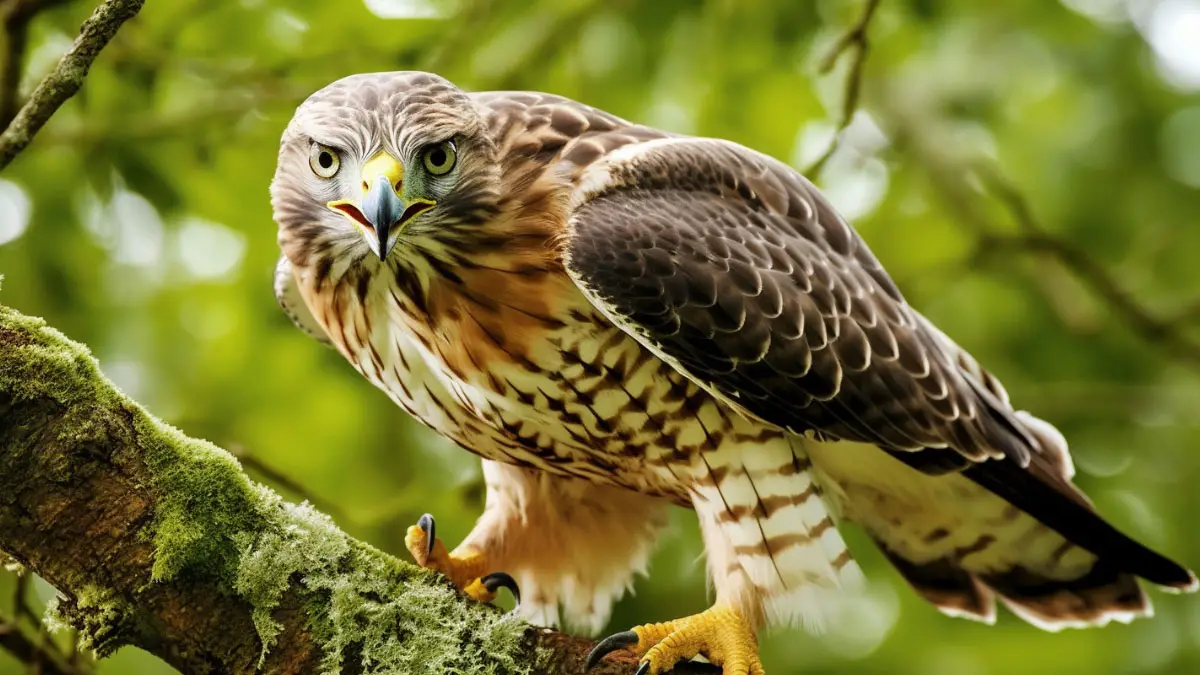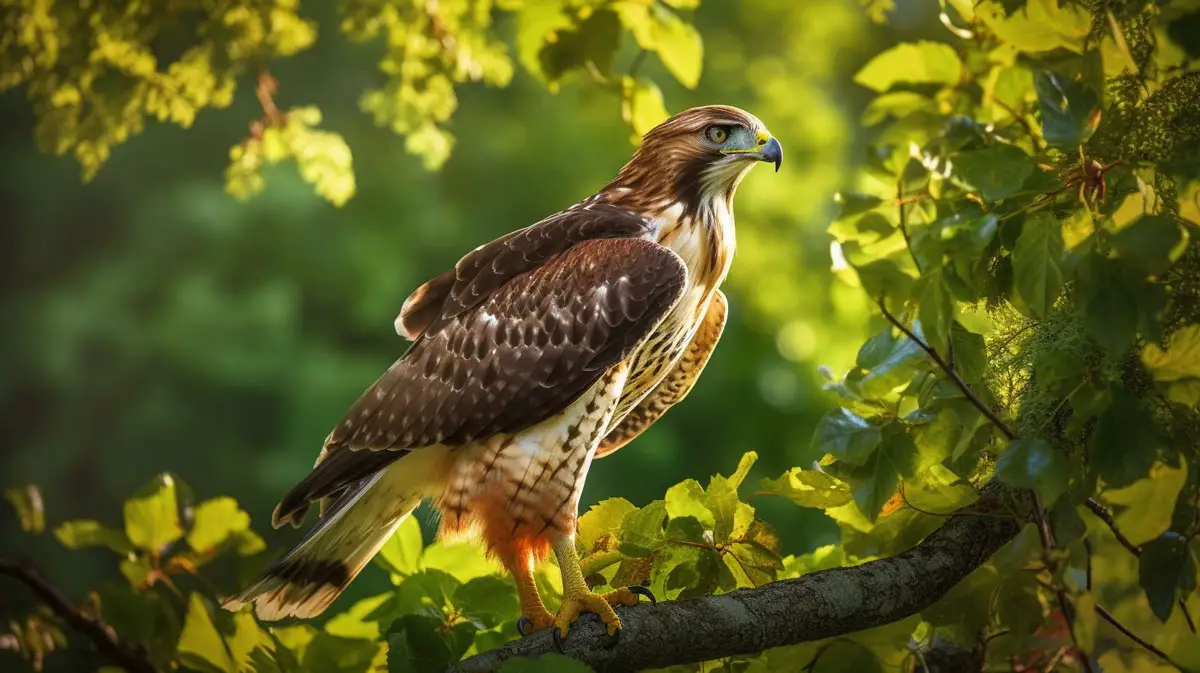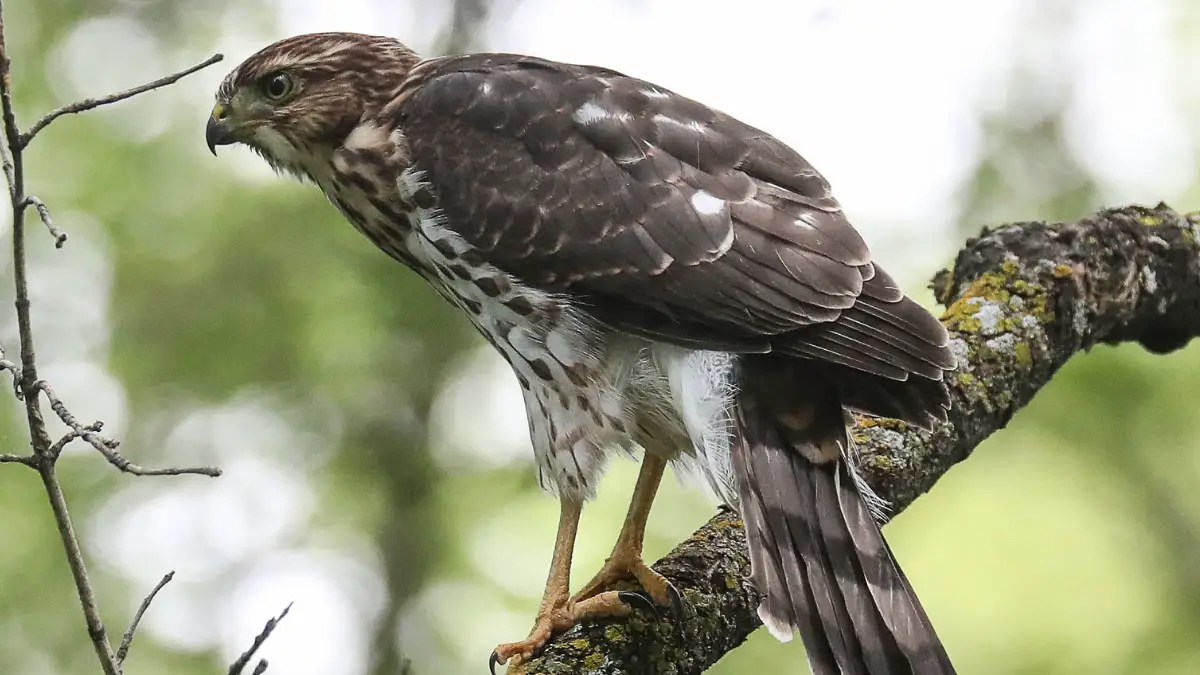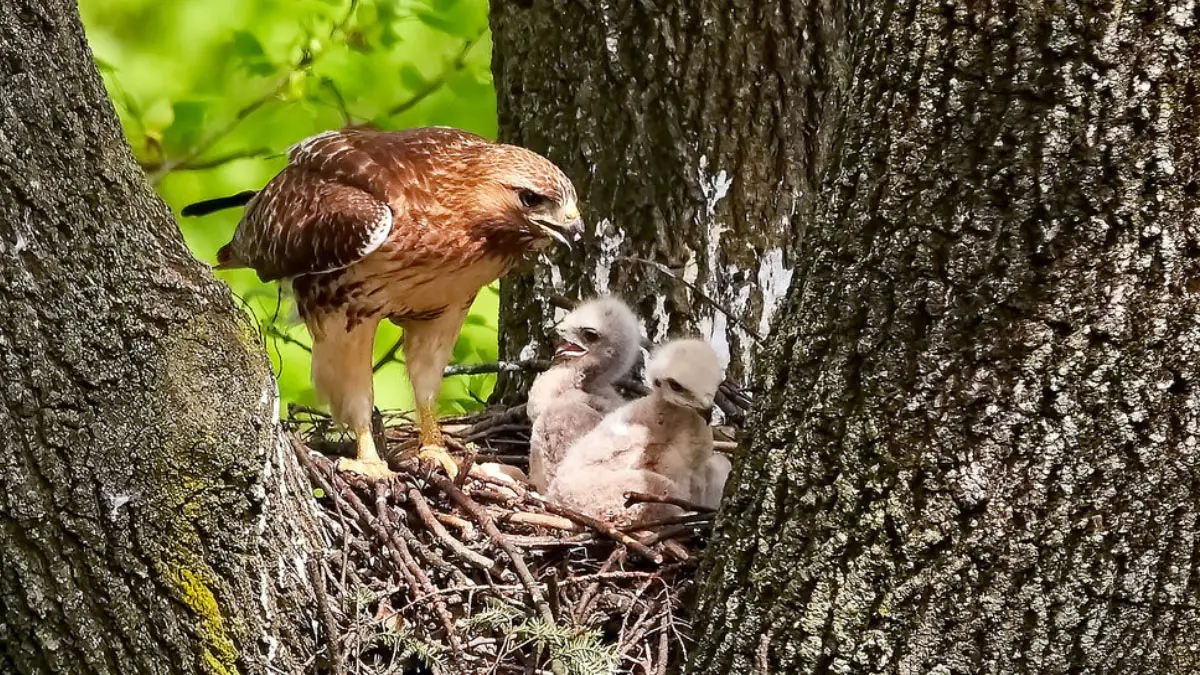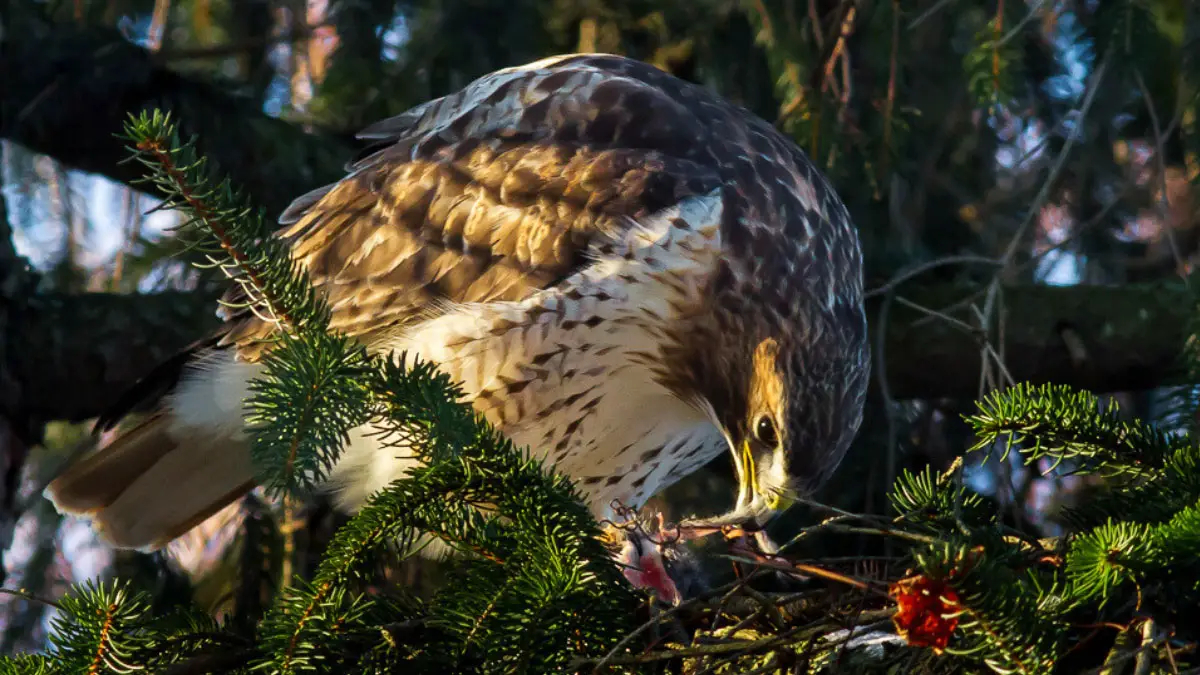A hawk is a bird of prey in the family Accipitridae. You shouldn’t be confused with raptors, a generic term for all predatory birds like eagles, vultures, falcons, and owls. Being predatory birds, most would take hawks for vermin and wanton killers. Nevertheless, there’s a good side to these birds.
- These birds control small animal populations like rabbits and rodents, many of which are considered pests
- Hawks are sensitive to pollution and environmental changes, making them good indicators of the health of an ecosystem
- The nests of some species, such as the Red-tailed hawk, are a habitat for small bird species like house sparrows
But how long do hawks live? Many variables are in play, like the type of species, environmental factors, diseases, and human interference. Even at that, most species typically have an average lifespan of 15 years, always living longer in captivity than in the wild.
By understanding their lifespan, we’ll better know their life cycle and reproduction patterns and identify threats to hawk population growth. Moreover, it makes it easier to implement effective conservation strategies.
Read on as we detail hawk lifespan, threats to their survival, and which conservation efforts are in place to improve the longevity of these birds.
Longevity of Different Hawk Species
There are two ways to look at the longevity of these birds. We need to look at how old they can get both in the wild and in captivity. Moreover, lifespan varies across the different hawk species.
As such, we’ll break down the maximum average for each bird and factors that may determine how long they live.
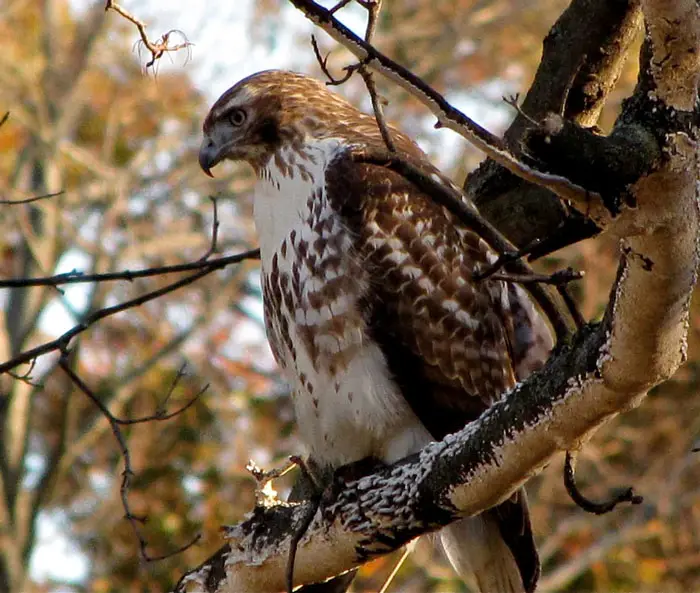
Essentially, age determination starts with banding a young bird of known age, mostly a nestling or one that’s just old enough to fly. The bird is then recovered once it dies.
The Average Lifespan of Hawks in the Wild and in Captivity
- Lifespan in the Wild: Age determination often proves a challenge in the wild, and for a good reason. Most carcasses would end up eaten, while others may be hard to locate. Even at that, bird longevity studies have valuable data on life in the wild.
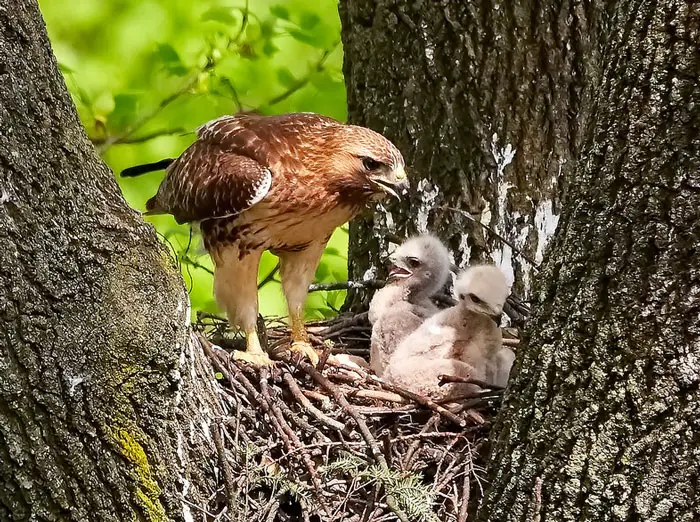
The average lifespan of hawks in the wild is 12 years. Nevertheless, there’s a high likelihood of earlier death, meaning they may live less. This low average isn’t because of their biology. Instead, birds in the wild face more threats, both natural and man-made, than those in captivity. Most often, they risk flying into cars and power lines.
- Lifespan in the Captivity: The typical average lifespan of hawks in captivity is 15-20 years, depending on the type of bird. Fewer threats, quality care, and adequate nutrition explain the higher average in captivity.
Comparison of the Lifespan of Different Hawk Species
Currently, there are around 200 hawk species exist, from the large Red-tailed hawk to the small sharp-shinned birds. Hence, it won’t be easy to provide a rundown for all these species. However, we have well-documented data for the most popular hawk species.
- Lifespan of Red-tailed hawk: The Red-tailed bird is easily the longest-living species with a maximum average of 29.5 years. However, a few individuals have hit above 30 years.
- Lifespan of Cooper’s Hawk: These bird species are pretty much on the lower average. Nevertheless, their maximum average of 12 years is more than most avian lifespans out there.
- Ferruginous hawk lifespan: Ferruginous hawks are one of the largest hawk types. These birds live 20 years on average.
- Longevity of Harris’s hawk: Harri’s and Ferruginous hawks are second to the Red-tailed in terms of maximum average lifespan. The Harri’s hawk would typically live for up to 25 years.
- Lifespan of sharp-shinned hawk: The small Sharp-shinned hawk has the shortest lifespan among the popular hawk types. These small birds average 9.8 years on the max.
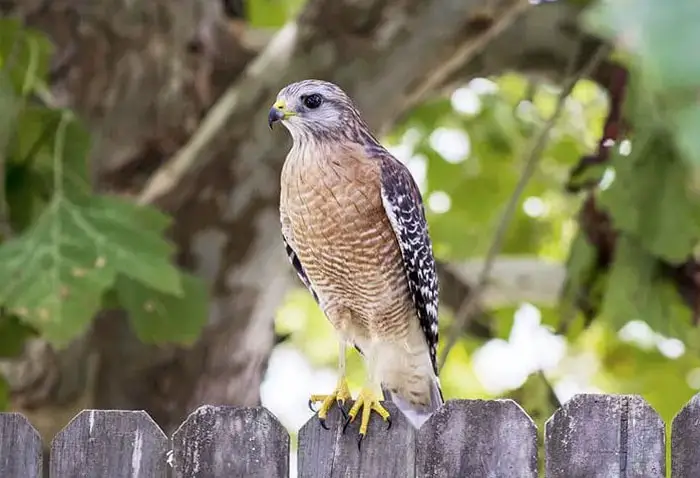
Of course, these are just a few of the popular species. Refer to this hawk lifespan chart that includes the life expectancy of other types of hawks. Note that these maximum averages are for birds in captivity.
| Hawk Species | Average Maximum Longevity (Years) From Banding Studies |
|---|---|
| Red-tailed hawk | 29.5 |
| Common black hawk | 13.5 |
| Ferruginous hawk | 20 |
| Sharp-shinned hawks | 9.8 |
| Cooper’s hawk | 12 |
| Northern goshawk | 19 |
| Harri’s hawk | 25 |
| Broad-winged hawk | 18 |
| Swainson’s hawk | 16 |
| Red-shouldered hawk | 20 |
| Eurasian sparrowhawks | 15 |
| Rough-legged hawk | 18 |
| Hawaiian hawk | 17 |
Records of the Oldest Known Hawks and How They Lived
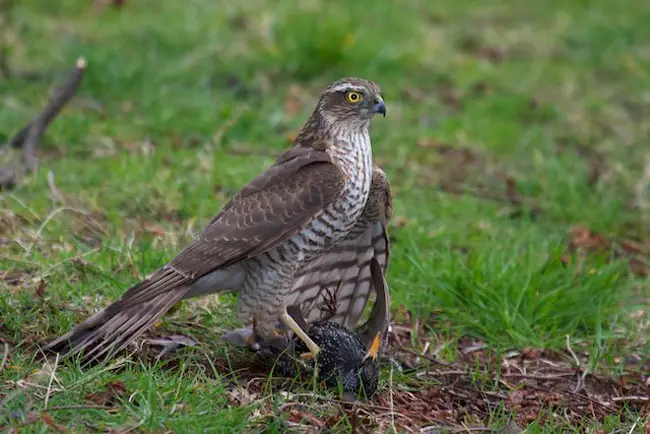
How old do hawks get? To get a clear picture, we’ll look at two documented lifespan record holders, who all happen to be red-tailed hawks.
- Pale Male: This red tail is still living and thriving on a ledge in New York City. He was hatched in 1990, which provides a clear record right from birth. That makes this red-tailed 33 years old, and he’s still living.
- Charlie: According to Washington State University Insider, this injured red tail was rescued and brought to the University’s College of Veterinary Medicine in 1981. It was cared for, banded, released, and later found in 2011 in Michigan. According to the records, Charlie the Hawk lived from 04/1981 to 08/2014. That’s at least 33 years.
So, the question, “How long do red-tailed hawks live” is made more clear by these two record holders. While the maximum average is 29.5 years, it’s clear they can live up to 33 years or more.
Factors That Affect Hawk Lifespans
Longevity factors like the environment, genetics, diet, and disease largely determine how long a hawk lives. Let’s see how each variable affects lifespan.
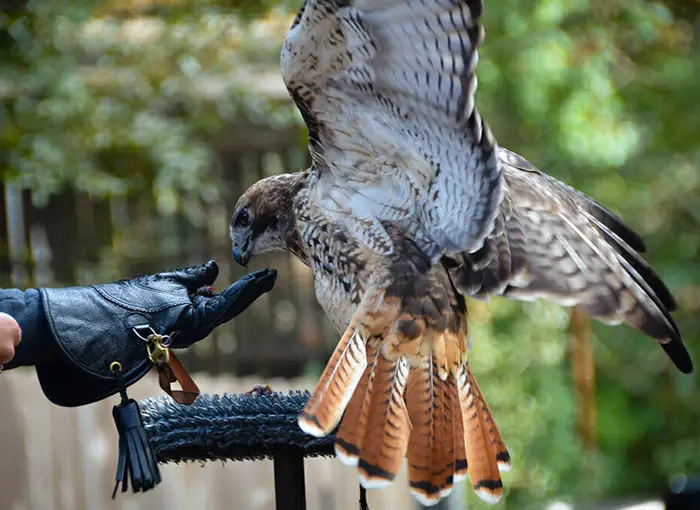
- Environmental Factors: Pollution, climate change, and habitat loss could kill the birds prematurely or affect the availability of food sources critical for the hawks’ survival. Studies also show the negative impact on the hawk population due to lead poisoning from proximity shootings. As it turns out, it has negative effects on the health and development of nestlings.
- Genetics: A bird may inherit beneficial genetic variations that increase its lifespan. Conversely, young hawks may inherit genetic mutations that make them susceptible to diseases, hence decreasing their life expectancy.
- Diseases: Avian diseases can affect predator lifespan in two ways. Birds of prey can contract diseases directly or get them by eating infected prey. Diseases like Avian Influenza, West Nile Virus, and Aspergillosis are known to cause high mortality rates in hawks.
Red-tailed hawks and Cooper’s hawks are most affected by the West Nile Virus. In fact, reports show that West Nile Virus causes high mortality in red-tailed hawks.
Other studies also suggest that the reuse of nests contributes to parasitic load. These ectoparasites would often affect nestlings. Research on raptor ectoparasites shows lice as the most prevalent, followed by mites.
- Diet: Hawks need diverse prey to get all the necessary nutrients for good health and longevity. A diet solely of one type of prey may lead to malnutrition, hence decreasing a hawk’s lifespan.
Aging in Hawks
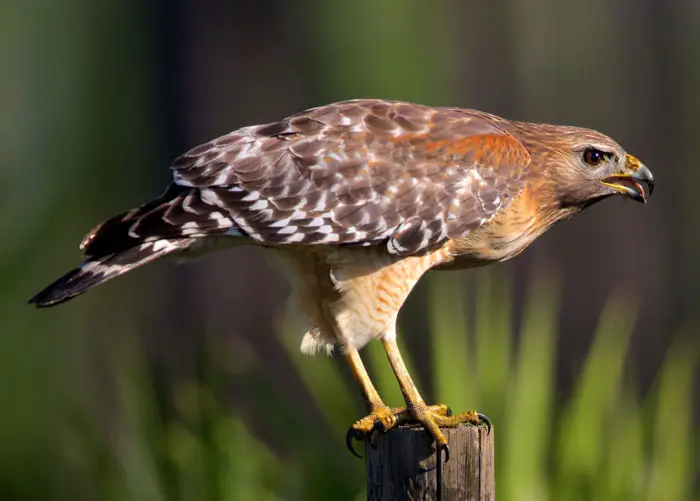
Let’s look at age determination and the changes that hawks go through as they age.
How to Determine the Age of a Hawk?
Other than banding and recovery, you can tell between juvenile and adult birds from their physical and behavioral differences.
| Feature | Juvenile | Adult |
|---|---|---|
| Plumage | Darker with fewer distinctive markings | Lighter with intricate markings |
| Eyes | Yellow iris | Red iris |
| Molt pattern | Less predictable molt patterns | More uniform molt pattern |
| May undergo a complete body molt | Gradual molt pattern | |
| Flight patterns | Erratic and uncoordinated | More fluid wing beats and smoother movements |
| Fly at low altitudes | Soar at high altitudes |
Physical and Physiological Changes in Aging Hawks
Aging birds will undergo physical and physiological changes. The most notable areas include feather condition, eyesight, hearing, and muscle strength.
- Changes in Feather Condition: The quality and texture of a hawk’s feathers deteriorate with age. Fading, loss of pigmentation, and fraying are typically telltale signs.
Over time, the bird will have poor flight performance and agility, losing its ability to hunt. And because feathers also serve as insulation, old birds will have a hard time maintaining body temperatures.
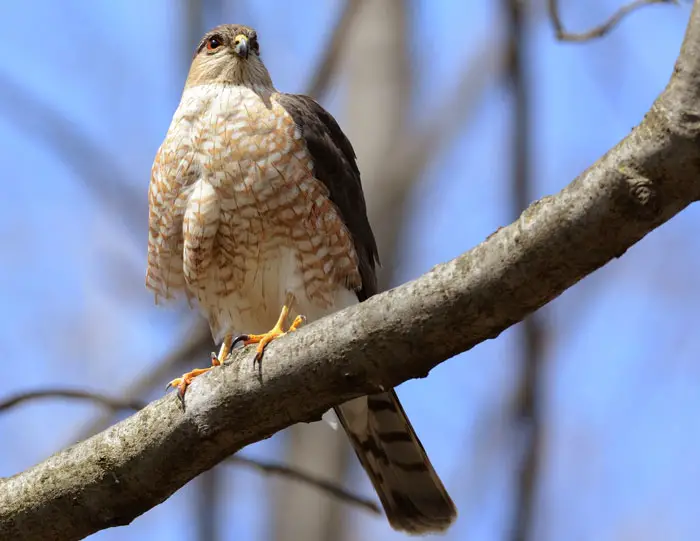
- Decline in Eyesight and Hearing: As they age, these birds develop cataracts that impede their vision. The result? A decline in visual acuity, color perception, and peripheral vision.
Likewise, hearing sensitivity wears on with time. Such changes affect the bird’s ability to navigate its environment, detect prey, and communicate with other hawks.
- Reduction in Muscle Strength and Endurance: Aging brings about a reduction in muscle mass and protein production. And this means the bird will have less muscle strength and endurance, impacting its ability to hunt and soar greater distances.
How Aging Affects the Behavior and Hunting Abilities of Hawks
As they age, hawks lose their physical abilities and agility. This will, in turn, make it challenging for the bird to hunt effectively. In the long term, it will impact their overall health and survival.
Nevertheless, aged hawks may try to change their hunting technique to compensate for age-related declines. They may, for instance, resort to scavenging. Also, they may start targeting prey that requires less agility and speed, such as ducklings. Such adaptation will help them maintain their hunting success and increase their chances of survival.
Comparison of Aging in Hawks With Other Bird Species
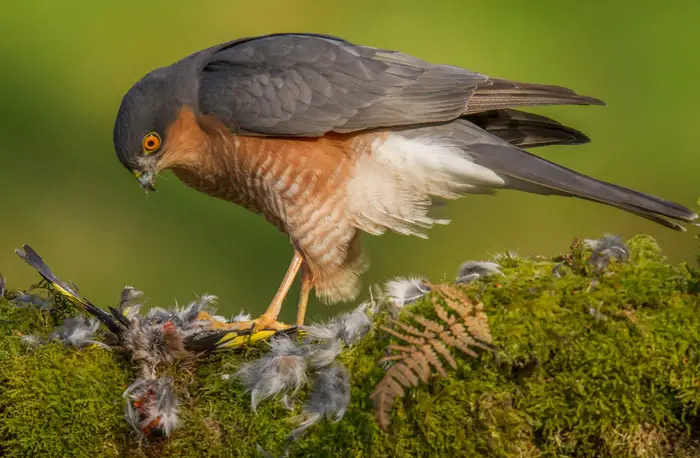
Let’s look at the lifespan of other raptor species to see how they compare to hawks.
| Raptor Type | Maximum Recorded Lifespan |
|---|---|
| Eagle | 55 years |
| Vulture | 45 years (California Condor) |
| Kite | 38 years |
| Falcon | 37 years |
| Osprey | 25 years |
Environmental Factors That Affect Hawk Longevity
Habitat loss and fragmentation, pollution, and climate change are the three environmental factors affecting hawk lifespan. Let’s discuss each factor in detail.
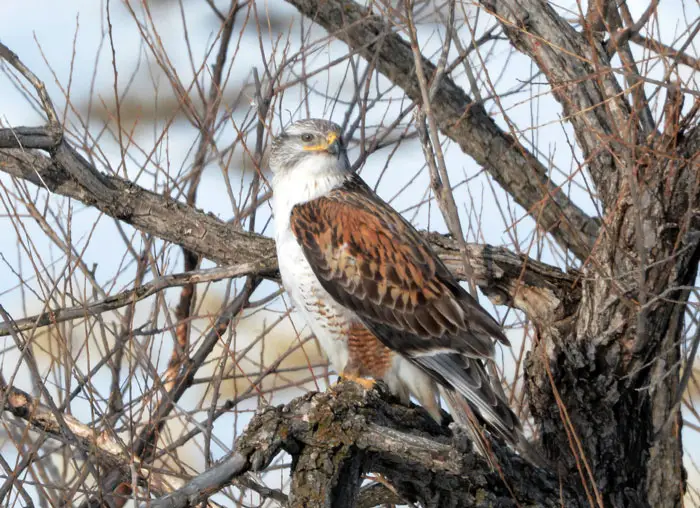
Habitat Loss and Fragmentation
Habitat loss and fragmentation from deforestation, wildfires, urbanization, and other human activities lead to:
- Decrease in available prey and nutritious food sources
- Increased competition for limited resources
- Exposure to human-induced hazards and predators
- Destruction of nesting sites
Oftentimes, the remaining habitat would be too small to sustain available prey. This leads to reduced food sources and more competition for the small number of available prey. As such, the chances of survival would be limited and nutritional requirements may not be met.
Again, hawks would often run into human-induced hazards like power lines, man-made structures, and vehicles-causing fatalities. Human-induced predators like hawks and dogs are also common in fragmented landscapes. Cats, for instance, may invade nesting sites, killing nestlings.
Pollution and Chemical Exposure
Birds of prey, including hawks, are sensitive to environmental toxins. As such, exposure to pollutants like lead, pesticides, and insecticides will severely impact their health.
Prey shot with ammunition may be contaminated with lead. Also, prey may eat plants sprayed with insecticides and pesticides. This causes the bioaccumulation of pollutants in the prey. So, when a hawk eats the prey, the toxins are introduced into its body.
These toxins may affect the nervous system and immune system. They may also cause developmental abnormalities and reproductive failure, ultimately reducing the hawk’s lifespan.
Climate change and its effects on hawk populations
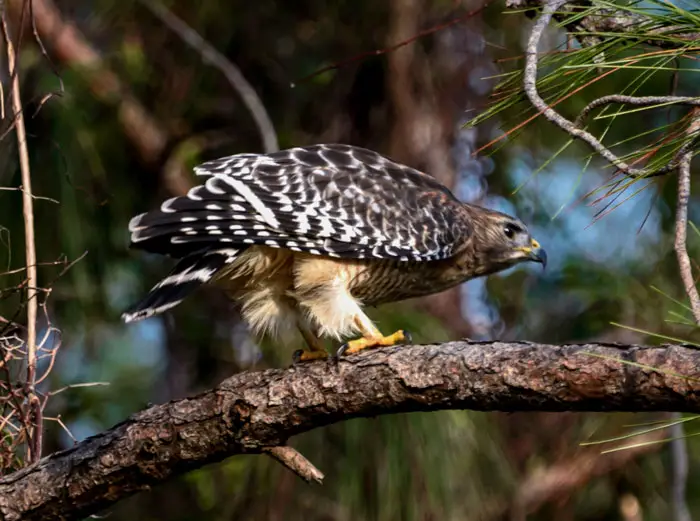
Climate change cause
- Changes in hawk migration patterns
- Alterations in prey availability
- Habitat loss and fragmentation
Forced migration due to climate change may throw the birds off their natural migration path. Oftentimes, they may end up in unfamiliar territories that may expose them to harsh weather, diseases, and predators. Such stressors may lead to shorter lifespans over time.
Changes in temperature and precipitation patterns would often see a shift in the distribution and abundance of prey. Such alterations may negatively impact the hawk population and survival.
Climate change also contributes majorly to habitat loss and fragmentation. Drought and fire regimes, for instance, may destroy hawk nests and alter their foraging habitat. This will negatively affect reproductive success and lead to possible extinction.
Conservation Efforts to Protect Hawk Habitats and Reduce Human Impacts on Hawk Survival
Efforts by bird conservation organizations are taken, including the following.
- Habitat conservation strategies: Habitat conservation strategies include the designation of critical hawk habitat areas. Here, the birds are protected, monitored, and habitat selection is studied. Some key bird-of-prey conservation organizations in this area are The National Audubon Society and HawkWatch International.
- Education and public outreach programs: Education and public outreach programs are meant to raise awareness of the importance of protecting hawk habitats. The Peregrine Fund, for instance, educates communities on the consequences of human activities like habitat destruction and pollution on hawk survival. These education programs are also meant to reduce the demand for hawk products.
- Regulation and enforcement of laws to protect hawks: The birds are also protected by federal laws. For instance, hawk killing and possession without a permit attract legal action. Moreover, lethal methods like poison and traps are prohibited. The U.S. Fish and Wildlife Service is a good example of this category.
Rehabilitation and Longevity Studies
What’s the role of rehabilitation centers and bird lifespan research in improving hawk lifespan? Here, we look at their roles and how they stand to benefit by collaborating.
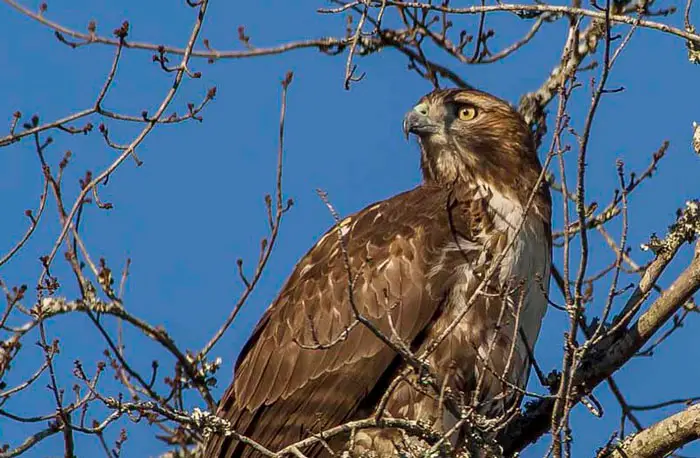
Hawk Rehabilitation Centers and Their Role in Improving Hawk Lifespan
- Providing medical care and rehabilitation for injured hawks
- Educating the public about hawks and their role in the ecosystem
- Reintroducing hawks into the wild to increase their population
Good examples of hawk rehabilitation centers are Braveheart Raptor Rehabilitation Center in Michigan and Hawk Mountain Sanctuary in Pennsylvania. The reclassification of the Hawaiian hawk from endangered to threatened in 1993 is a testament to the success of rehabilitation efforts.
Longevity Studies and Their Contributions to Understanding Hawk Lifespan
Hawks’ lifespan studies are primarily for the purpose of providing valuable insight into the hawk lifespan and factors affecting aging in birds. Nevertheless, they would go beyond to also monitor reproductive success and perform genetic studies on how to improve the life expectancy of this bird of prey.
The most popular tracking methods are banding radio telemetry, and satellite tracking. Essentially, they help researchers to track the movement of individual birds.
Collaboration Between Hawk Rehabilitation Centers and Longevity Studies
Hawk rehab centers focus on the human intervention necessary for rescuing, treating, and rehabilitating injured hawks. This will help develop best practices for conservation efforts.
On the other hand, bird longevity studies investigate the biological and environmental factors that promote healthy aging in birds. By working in tandem, these disciplines can leverage their strengths to uncover new insights on how to improve hawk lifespan.
A good example is a study by Hanson in 2021 that analyzed wildlife case records by New York rehabilitators between 2012 and 2014 to identify trends and patterns in rehabilitation techniques.
Conclusion
The role of hawks in the ecosystem can’t be overstated. However, habitat loss, pollution, and climate change are a threat to hawk survival. By knowing the average lifespan of a hawk, conservationists will be in a better position to assess their health and make informed management decisions to ensure long-term survival.
Essentially, conservation efforts should prioritize protecting and restoring hawk habitats, reducing the use of harmful pesticides, and promoting sustainable land use practices.
Nevertheless, factors affecting hawk lifespan are pretty complex and varied. In this regard, further research is needed to better understand these hawk longevity factors and how they interact and impact hawk survival.
Specifically, researchers should focus on gathering accurate lifespan data for different hawk species. They also need to investigate the factors that affect lifespan and population health. This will help to ensure the continued survival of hawks and the health of the ecosystems they inhabit.
